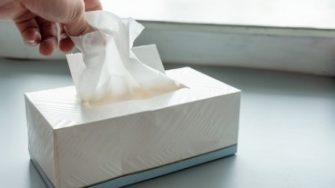
SOVS Paper of the Week: What has bacterial biofilm got to do with contact lenses? Up to 90% of contact lens storage cases are contaminated with bacteria, and biofilms can form if they are not completely removed. Biofilms are the result of a steady build-up of bacteria on surfaces. They appear as a slimy layer on surfaces, plaque on teeth is an example. Biofilms protect bacteria against disinfectants commonly used in contact lens solutions. Contact lens manufacturers have added silver a well-known antimicrobial agent to contact lens storage cases to decrease the build-up of bacteria and deter biofilm formation.
This study examined the effectiveness of current recommended cleaning procedures in removing biofilms of pathogenic bacteria from storage cases containing silver. Important findings of this study are 1. Silver does not deter biofilm formation and 2. Usual cleaning procedures do not remove all bacteria from storage cases. The simple additional step of wiping the storage cases with a clean facial tissue after cleaning removed nearly 100% of the pathogenic bacterium Pseudomonas aeruginosa a leading cause of contact lens related eye infections.
The full article can be downloaded here:
https://www.sciencedirect.com/science/article/pii/S1367048419302395?dgcid=author
